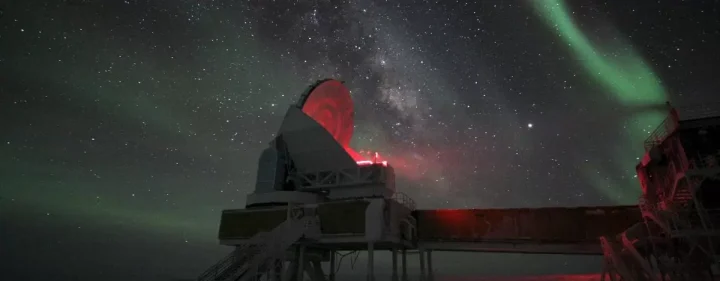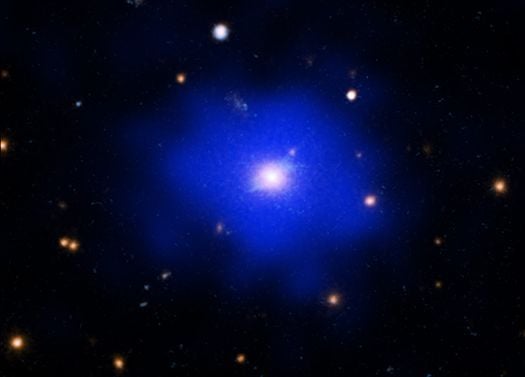Cluster is farthest ever spotted not disrupted by violent collisions with other galaxy clusters.
Astronomers have discovered the most distant “relaxed” galaxy cluster to date — the farthest cluster ever spotted that is not being disrupted by violent collisions with other clusters of galaxies. The finding is paving the way to learning how and when some of these gigantic structures form and why the universe looks like it does in the present day.

This galaxy cluster, named SPT2215, is about 8.4 billion light-years from Earth and is viewed when the universe is 5.3 billion years old, compared to its current age of 13.8 billion years.
That implies the cluster got a head start in its formation compared to other clusters of similar size and that it has been “coasting” for the last billion years, allowing it to relax. Astronomers estimate the cluster has a mass some 700 trillion times that of the sun.

Galaxy clusters grow over time by merging with other galaxy clusters or groups, causing disturbances in the cluster’s gas. With enough time to “relax” without a merger, the gas can take on a smooth, calm appearance.
One key feature of SPT2215 is the isolation of its central galaxy. No other galaxies within about 600,000 light-years are anywhere near as bright or extended. That implies that the cluster has not experienced a merger with another cluster in about the last billion years, giving evidence that SPT2215 is relaxed.
The results on SPT2215 fit well with other observations, which have shown galaxies forming at a very young age. Relaxed clusters are signposts that have been used to measure the expansion of the universe.
Source: NSF

